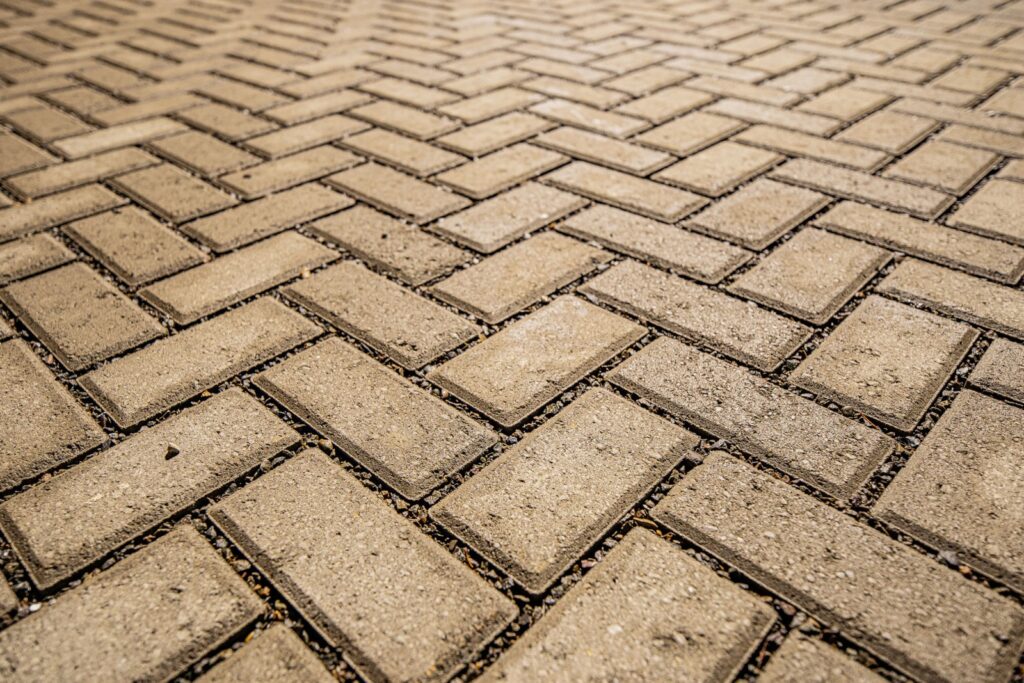
Permeable Pavers
What are Permeable Pavers?
As you might expect, permeable pavers make it easier for water to drain through its joints, eliminating standing water and helping reduce the amount of pollutants that reach our water table.
Permeable pavers are paving materials specifically designed to allow water to pass through them. They are made with concrete, fired clay, or brick. They have tiny gaps between units filled with crushed aggregate. The joints between units are more open and wider, allowing more water to get through the underground drain. Also, the interlocking stones are built atop a gravel-only base.
Differences
One difference between permeable and non-permeable pavers is in the base. Permeable pavers have a deep, gravel-only base as opposed to a base that is thinner and composed of concrete sand and gravel. Specifically, the base is made of 6–8″ of ¾” open aggregate.
Another difference is in joints. Traditional non-permeable pavers have joints that are stiff and filled with sand. Permeable pavers have joints that are much wider, allowing water to easily drain through the cracks and soak into the soil below.
Also, and most importantly, permeable pavers actively direct water back into the earth. They prevent rainwater from pooling and creating waste or toxic water, but instead allow rain to soak back into the soil. Permeable pavers are the top environmentally friendly option and can be used in all the same ways as traditional pavers.
Benefits
- Durable and Long-Lasting.
- Easy to Repair.
- Reduce Erosion
- Fewer Mosquitoes
- Help Return Rainfall into the Groundwater Table
- Protect Waterways from Pollutants. Oil, rubber, or other chemicals
Cons:
Higher upfront cost: due to the specialized materials required to make them they may be more expensive.
Regular maintenance: Permeable pavers require regular joint maintenance to prevent clogging and maximize performance.
Fewer design options
The Installation Process
Site Preparation – Starts with excavating the area to the required depth and ensuring the right grading to direct water flow. A geotextile fabric is then laid down to prevent soil migration and promote stability.
Base Layer – A base layer of crushed stone or gravel is installed to provide a stable foundation and enhance drainage. This layer is compacted to create a firm surface that supports the weight of the pavers and any vehicles or foot traffic.
Laying the Pavers – Permeable pavers are carefully installed in the desired pattern, with gaps between them filled with permeable materials like sand or small stones. This ensures that water can pass through the surface and be absorbed into the ground below.
Final Touches – Once the pavers are in place, the entire area is compacted to ensure stability and levelness. Any remaining gaps are filled, and the surface is cleaned to remove excess materials. The result is a functional, beautiful and environmentally friendly paved area.
Check out our other paver specific website pages or our paver estimating tool on our pavers page by clicking on the links below:
